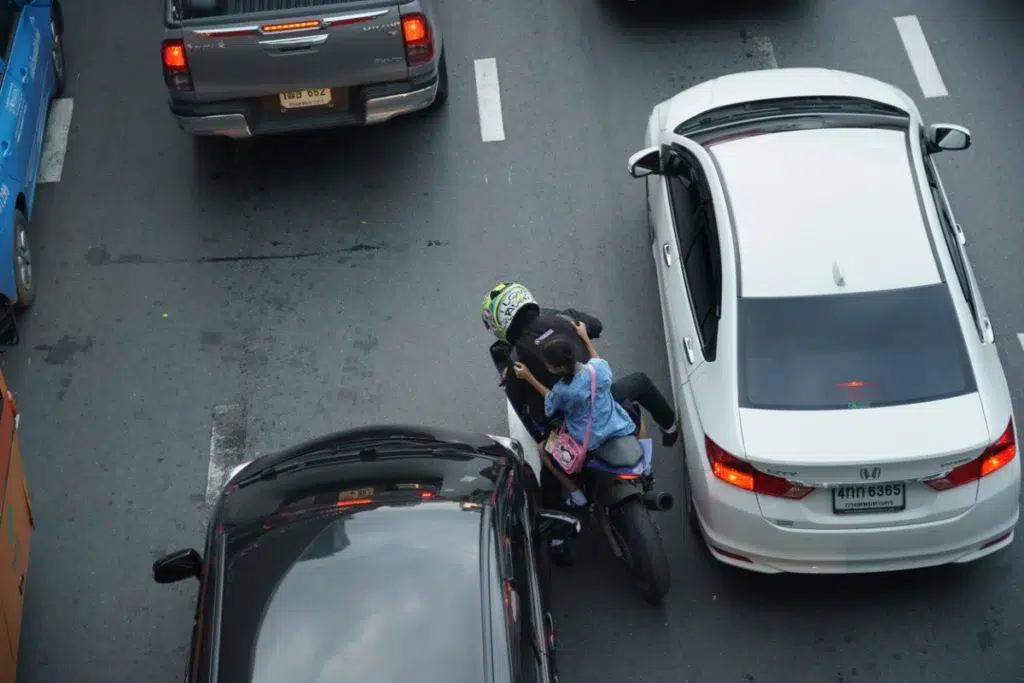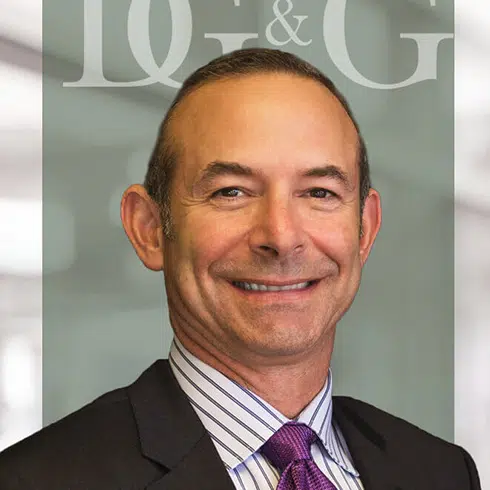
When it comes to the dangers of the open road, motorcycle and car accidents often raise an important question: What percentage of motorcycle accidents are the rider’s fault? While motorcycles offer freedom and agility, they also expose riders to significant risks of severe injuries. Understanding fault in these accidents not only sheds light on liability but also helps riders and other drivers take steps to prevent future incidents.
If you or a loved one has been involved in a motorcycle accident in San Francisco or anywhere in California, knowing your rights and the common causes of these accidents is critical. Our team regularly handles complex cases involving motorcycles and personal injury, and we provide legal guidance on everything from motorcycle accident representation to general personal injury claims and navigating the legal process after a crash.
The Key Question: What Percentage of Motorcycle Accidents Are the Riders’ Fault?
According to data from the National Highway Traffic Safety Administration (NHTSA) and other studies, motorcyclists are at fault in approximately 40% of motorcycle accidents, depending on the specific circumstances and reporting agency. That means in up to 60% of crashes, other drivers—typically those in passenger vehicles—are either partially or fully at fault.
This statistic dispels the myth that rider error is usually to blame. Most motorcycle accidents occur when drivers fail to see motorcyclists, misjudge their speed, or make illegal turns.
Determining Fault
Determining fault when motorcycle crashes occur involves assessing various factors, including the behavior of both the motorcyclist and other drivers involved. Common assumptions suggest that motorcycle riders are reckless, but the statistics often tell a different story.
Common Causes of a Motorcycle Crash
To better understand the distribution of fault, it’s essential to look at the most frequent causes of a motorcycle crash:
1. Left-Turn Accidents
One of the most common types of accidents involving motorcycles occurs when a passenger vehicle makes a left-hand turn in front of an oncoming motorcycle. These crashes are typically the fault of the car driver and account for about 42% of all accidents involving a motorcycle and other vehicles.
2. Lane Changing and Blind Spots
Many motorcycle and car accidents happen when a vehicle changes lanes and fails to see a motorcyclist in its blind spot. Motorcycles’ smaller size makes them harder to detect, but the responsibility often lies with the vehicle driver to check all blind spots thoroughly.
3. Speeding and Reckless Driving
Excessive speed contributes to a large portion of all motor vehicle accidents, including motorcycle crashes. While motorcyclists can be guilty of speeding, car drivers are equally culpable. Shared fault is common in these cases.
4. Distracted Driving
Distracted driving is a growing problem for road safety with the increased use of smartphones. Car drivers who are texting, talking on the phone, or using in-car technology can easily miss a nearby motorcyclist, leading to fatal accidents.
5. Driving Under the Influence
Alcohol and drug use impair judgment and reaction time. Both motorcycle riders and car drivers who operate vehicles under the influence are breaking traffic laws and are a danger to everyone on the road.
6. Road Conditions and Hazards
Motorcycles are more vulnerable to road hazards like potholes, debris, gravel, and uneven pavement. While not necessarily the fault of a rider or driver, these environmental conditions often contribute to traffic fatalities. In some cases, municipalities or road maintenance authorities may bear responsibility.
7. Inexperienced Riders and Drivers
This is one of the leading causes of motorcycle accidents. Lack of experience can significantly impact reaction times and decision-making in critical moments. New motorcyclists may not have the skill set needed to navigate complex road situations, while inexperienced car drivers may misjudge a motorcycle’s speed and distance.
Role of Car Drivers
Car drivers play a significant role in most motorcycle accidents. Their failure to account for the smaller size and faster maneuverability of motorcycles often results in collisions and severe injuries. Here are some key areas where car drivers contribute to a motorcycle crash:
- Failure to Yield: Especially in left-turn situations, car drivers often fail to yield the right of way to oncoming riders, leading to a motorcycle collision.
- Blind Spot Oversight: Cars have significant blind spots, and motorcycles can be completely obscured from view if drivers don’t turn their heads to check, as seen in many motorcycle crash cases.
- Misjudging Speed: Because motorcycles are smaller, drivers often underestimate their speed, leading to unsafe merging or turning decisions.
- Aggressive Driving: Tailgating or sudden lane changes by passenger vehicles can endanger motorcyclists, who may not have enough time or space to react.
Driver education and awareness campaigns aimed at reducing these behaviors can significantly lower the number of accidents involving motorcycles.
Injuries Sustained in Motorcycle Accidents
Most motorcycle accidents often result in severe injuries due to the lack of protective barriers. Unlike a car accident, motorcyclists are exposed to direct impact and frequently thrown from their bikes, increasing injury severity. Common injuries include:
- Traumatic Brain Injuries (TBIs) – Traumatic brain injuries(caused by head trauma) are a leading cause of death and disability among motorcyclists, and they can happen even while wearing helmets.
- Spinal Cord Injuries – Damage to the spine can result in permanent paralysis or chronic pain.
- Fractures and Broken Bones – Arms, legs, ribs, and hips are particularly vulnerable during a crash.
- Road Rash – Severe abrasions caused by skidding across pavement, often leading to infections and scarring.
- Internal Injuries – Damage to organs, internal bleeding, and other non-visible injuries are common and often life-threatening.
These injuries not only cause physical pain and suffering but also bring significant financial burdens due to medical expenses, lost wages, and ongoing care needs. That’s why working with a skilled motorcycle accident attorney is critical in recovering fair compensation.
Are Motorcycle Riders Reckless?
There is a common stereotype that paints motorcyclists as reckless thrill-seekers. While some riders do take unnecessary risks, the vast majority are responsible and safety-conscious. Many riders have a vested interest in riding defensively because of how exposed they are on the road.
Motorcyclists are more likely than passenger car occupants to die in a crash per vehicle mile traveled, despite using proper safety gear. This high risk encourages many riders to adopt defensive and cautious riding habits. Most motorcyclists understand that they must be more vigilant because of how often other drivers overlook them.
Motorcycle safety courses, use of high-visibility and protective gear, adherence to speed limits, and avoiding dangerous maneuvers are just a few of the ways responsible riders protect themselves.
Shared Fault and Comparative Negligence in California
California follows a pure comparative negligence rule. This means that even if a motorcyclist is partially at fault for an accident, they can still recover damages. However, their compensation will be reduced by their percentage of fault.
For example, if a motorcyclist is found to be 30% at fault in an accident and the total damages amount to $100,000, the rider would still be eligible to recover $70,000.
This legal standard emphasizes the importance of thoroughly investigating the details of every motorcycle accident. Riders should not automatically assume they have no case just because they were involved in a crash.
Comparative negligence also means that insurance companies have an incentive to overstate a motorcyclist’s share of the blame. Having strong legal representation is crucial to ensure that fault is properly assigned.
San Francisco Motorcycle Accidents: A Closer Look
Urban environments like San Francisco pose unique risks for motorcyclists. The city’s steep hills, narrow streets, and heavy traffic increase the chances of accidents involving motorcycles. Additionally, weather conditions like fog and rain can further reduce visibility and traction and are common causes of motorcycle crashes.
San Francisco also experiences a high volume of delivery vehicles, buses, and ride-share cars, which increases congestion and the unpredictability of traffic patterns. For motorcyclists, this means extra caution is needed at intersections, when lane splitting, and during low-visibility conditions.
Given these challenges, it’s even more critical for riders in San Francisco to understand their rights and work with an experienced personal injury attorney at Delfino, Green & Green who knows the local landscape and legal nuances.
For detailed legal guidance tailored to local riders, explore our page on motorcycle accident legal support in San Francisco.
What to Do After a Motorcycle or Car Accident
Whether you’re involved in a motorcycle or car accident, the steps you take immediately afterward can have a significant impact on your legal case:
- Seek Medical Attention – Even if injuries seem minor, get evaluated by a medical professional.
- Document the Scene – Take photos, collect witness information, and get a copy of the police report.
- Avoid Admitting Fault – Do not apologize or suggest fault, even if you believe you contributed to the crash.
- Contact an Attorney – An experienced motorcycle accident attorney can help you determine fault and pursue compensation.
- Keep a Medical and Recovery Journal – Recording your symptoms, treatments, and how the injury affects your daily life helps support your claim.
- File a Claim Promptly – California’s statute of limitations gives you a limited time to file insurance claims, so don’t delay.
Why Legal Representation Matters
The fault in motorcycle accidents isn’t always clear-cut. Insurance companies often try to shift blame onto the motorcyclist to minimize their payouts. This is where a strong legal advocate becomes essential. At Delfino, Green & Green, we understand how to challenge these narratives and secure fair compensation for injured riders.
Our experienced attorneys will:
- Investigate the accident thoroughly
- Work with accident reconstruction experts
- Negotiate with insurers
- Represent you in court if necessary
To learn what happens after filing a claim, review our guide on what to expect in a motorcycle accident lawsuit.
Final Thoughts: Fault Is Often Shared or Misplaced
So, what percentage of motorcycle accidents are the fault of motorcyclists? Statistically, around 40% to 60% of the time. However, many accidents involving motorcycles occur because of driver inattention or error, not rider recklessness.
If you’ve been injured in a motorcycle accident, especially in a busy area like San Francisco, it’s crucial to consult with legal professionals who specialize in these cases. Don’t let assumptions about motorcyclists stand in the way of justice. Book a consultation with us today at Delfino, Green & Green, and let us protect your riders’ Rights, one case at a time.



